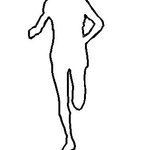Neuroscience

In a new article published in WIREs Congnitive Science, researchers from Duke University and the NIH suggest that the latest cognitive science research has the potential to fundamentally change how the legal system operates.
The team explains that Neurolaw, also known as legal neuroscience, builds upon the research of cognitive, psychological, and social neuroscience by considering the implications for these disciplines within a legal framework. Each of these disciplinary collaborations has been ground-breaking in increasing our knowledge of the way the human brain operates, and now neurolaw…
Stem cell-derived neurons can fully integrate into the brains of young animals, according to new research published in the the Journal of Neuroscience. Healthy brains have stable and precise connections between cells that are necessary for normal behavior, and the new study suggests that stem cells can be directed not only to become specific brain cells, but to link correctly. The finding may have long term implications for the treatment of spinal cord injuries and amyotrophic lateral sclerosis (ALS).
In the study, a team of neuroscientists focused on cells that transmit information from the…

Children learn basic mathematical rules such as 'less than' and 'greater than' because they are the foundation of mathematical operations. As adults, intelligent behavior requires strategic processing of numbers and abstract quantity information, such as when we adopt a 'less than' strategy when shopping for a product to pay the smallest amount of money. When searching for a job our plan of action is 'greater than' and we strive to earn the largest sum of money.
Neurobiologists in the laboratory of Andreas Nieder at the University of Tübingen writing in Proceedings of the…

Older people who suffer "mental lapses," or episodes when their thinking seems disorganized or illogical, may be more likely to develop Alzheimer's disease than people who do not have these lapses, according to a study published in the January 19, 2010, issue of Neurology.
These cognitive fluctuations, are common in a type of dementia called dementia with Lewy bodies, but researchers previously did not know how frequently they occurred in people with Alzheimer's disease and, equally important, what effect fluctuations might have on their thinking abilities or assessment scores.
The Neurology…

Researchers at Duke University Medical Center have identified neurons in the songbird brain that convey the auditory feedback needed to learn a song. Their research, published in Neuron, lays the foundation for improving human speech, for example, in people whose auditory nerves are damaged and who must learn to speak without the benefit of hearing their own voices.
"This work is the first study to identify an auditory feedback pathway in the brain that is harnessed for learned vocal control," said Richard Mooney, Ph.D., Duke professor of neurobiology and senior author of the study. The…

Loss of smell function may predict the onset of Alzheimer's disease, according to a new study published in the January 13 issue of the Journal of Neuroscience. The research links a loss of smell function in Alzheimer's disease (AD) model animals with amyloid ß (protein) accumulation in the brain, a distinguishing hallmark of Alzheimer's disease.
The formation of amyloid plaques and neurofibrillary tangles are believed to contribute to the degradation of the neurons in the brain and the subsequent symptoms of AD. In this newly published study, NYU Langone scientists used…

Blocking the function of an enzyme called cPLA2 with a specific kind of vitamin E can prevent nerve cells from dying after a stroke, new research published in the Journal of Neurochemistry suggests. Using mouse brain cells, scientists found that the tocotrienol (TCT) form of vitamin E stopped the enzyme from releasing fatty acids that eventually kill neurons.
Vitamin E occurs naturally in eight different forms. The best-known form of vitamin E belongs to a variety called tocopherols. The form of vitamin E in this study, tocotrienol or TCT, is not abundant in the American diet but is available…

Joggers love their head phones. If you ask them why, they’ll tell you it keeps them motivated. The right song can transform what is by all rights an arduous half hour of ascetic masochism into an exhilarating whirlwind (or, in my case, into what feels like only 25 minutes of ascetic masochism).
Music-driven joggers may be experiencing a pleasurable diversion, but to the joggers and bikers in their vicinity, they’re Tasmanian Devils.
In choosing to jog to the beat of someone else’s drum rather than their own, headphoned joggers have blinded themselves to the sounds of the other movers around…

A team of radiologists publishing in Autism Research says that children with autism spectrum disorders (ASDs) process sound and language a fraction of a second slower than children without ASDs, and measuring magnetic signals that mark this delay may become a standardized way to diagnose autism.
The researchers used magnetoencephalography (MEG), which detects magnetic fields in the brain, similar to the way electroencephalography (EEG) detects electrical fields. Using a helmet that surrounds the child’s head, the team presents a series of recorded beeps, vowels and sentences. As the child’s…

Neuroscientists have forged an interesting partnership with some unlikely molecular characters to accelerate their fight against diseases of the brain and nervous system. Researchers have brought together the herpes virus and a molecule known as Sleeping Beauty to improve gene therapy, a technology which aims to manipulate genes to correct for molecular flaws that cause disease.
Detailed in a paper published online in Gene Therapy, the effort has allowed scientists shuttle into brain cells a relatively large gene that can remain on for an extended period of time.
"We've broken what is in…